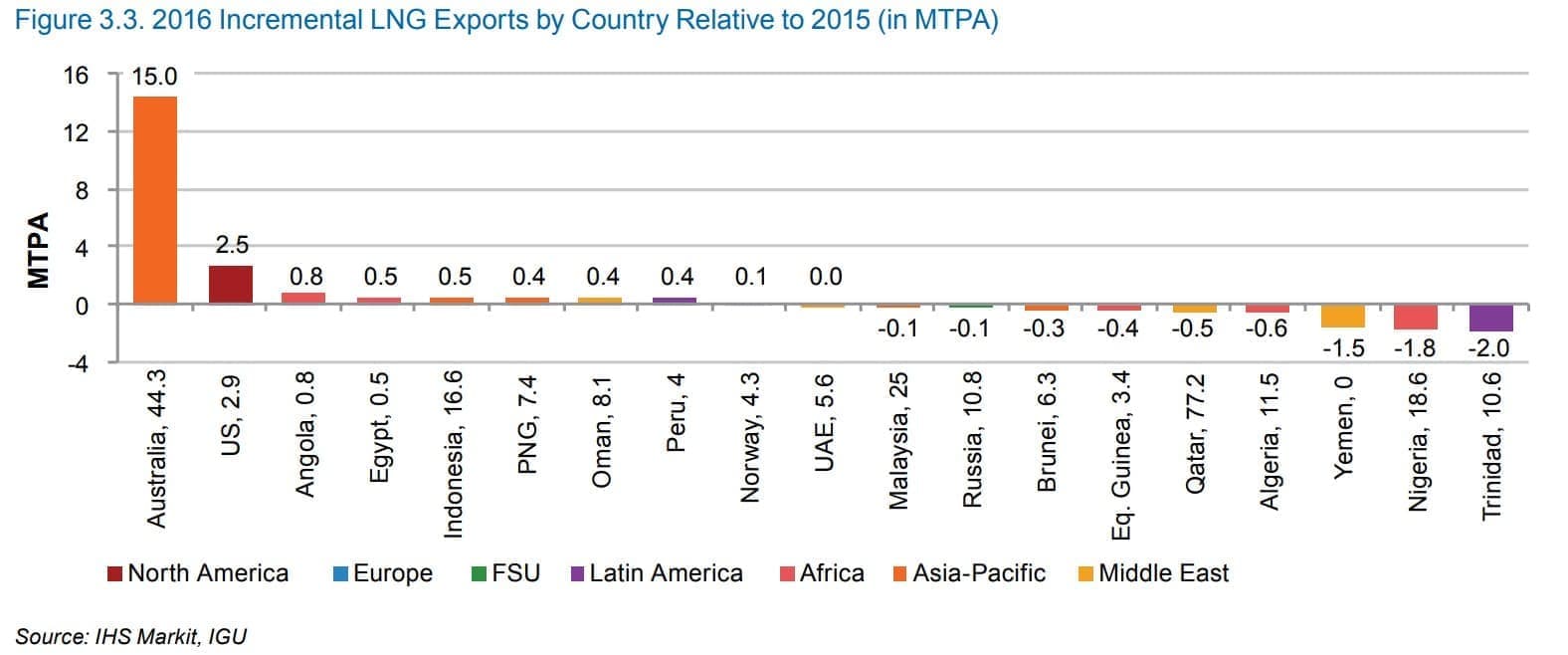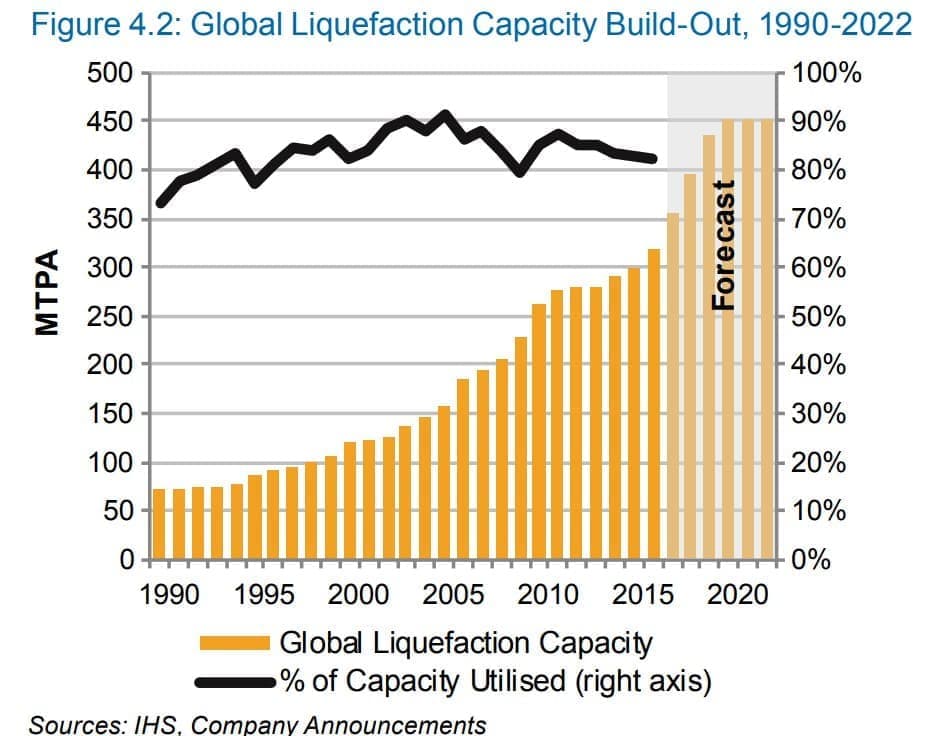China and other countries in Southeast Asia are helping erase the LNG glut, which was thought to last well into the next decade.
China is in the midst of a radical overhaul of how many of its citizens heat their homes. The government has made an aggressive push to scrap coal burning, particularly in smoggy cities, replacing home coal furnaces with natural gas. The effort has been so successful, arguably too successful, that there has been natural gas shortages this winter.
At the global level, China is helping to eliminate the glut of LNG, which many analysts predicted would stretch into the 2020s after a series of high-profile LNG export terminals came online in recent years.
Several of them, including Chevron’s Gorgon LNG facility in Australia, saw tens of billions of dollars’ worth of investment, massive bets on the future of LNG demand in Asia.
At the start of 2017, there was an estimated 340 million tonnes of annual LNG capacity (mtpa) around the world, up by more than a quarter since 2012. But all of the new capacity helped crash prices. At the start of 2014, for instance, spot LNG prices in Asia – the Platts JKM marker – traded at about $20/MMBtu. A year later, spot cargoes were down by two thirds.
The long lead times for LNG export terminals make it hard for the markets to respond nimbly to changes in supply and demand. Sudden large additions of export capacity leave the market drowning in supply, while demand increases at a more gradual pace.
Related: Why The Next Oil Boom Will Be Fueled By Blockchain
So many new terminals have already come online, but with 114 mtpa of LNG under construction, the LNG markets are thought to be under threat from still more waves of new supply. An estimated 57 mtpa was under construction in Australia, as of last year, with a further 31 mtpa in development in the U.S.

(Click to enlarge)

(Click to enlarge)
Photo Credit: International Gas Union, 2017 World LNG Report
In fact, so much LNG was leaving Australia’s shores that it led to a shortage in the Australian market, prompting government intervention to prevent blackouts. The IEA said that Australia should do more to boost production. "Increasing LNG exports have created a tight supply in Australia's eastern market, which is characterized by weak regulation, poor transparency and low liquidity," the IEA said in a report on Australia. "Gas production from new eastern fields has not been able to ramp up quickly to cover the increase in LNG demand.”
It isn’t just Australia. LNG markets are have suddenly tightened up quite a bit around the world. China’s coal-to-gas switch is soaking up some excess supply. Gas imports into China jumped by 50 percent over the past year to 38 mtpa, helping it surpass South Korea as the world’s second largest LNG importer.
Also, India may follow in China’s footsteps, with plans to add 11 LNG import terminals. Thailand, Bangladesh, Myanmar, and Indonesia are all set for strong demand growth over the next two decades.
Spot LNG prices in Asia – JKM prices – jumped above $11/MMBtu recently, the highest price in three years. "The LNG glut -- conspicuously absent isn't it?" Shell’s CEO Ben van Beurden told reporters at a press conference in London after releasing the company's fourth quarter earnings. Shell is now one of the largest LNG suppliers in the world after it acquired BG Group in 2015.
“The tight market is going to continue simply because demand is growing and expected projects have been delayed,” Jun Nishizawa, senior vice president at the energy division of Japan’s Mitsubishi Corp‘s., told Reuters in mid-February. Nishizawa pointed to the Ichthys project in Australia, which has suffered from delays and cost overruns. Related: Tech Giants Scramble To Secure Cobalt Supply
The tighter conditions have arrived several years earlier than anticipated. It wasn’t all that long ago that analysts predicted it would the 2020s before LNG demand started to catch up with supply. The new tightness offers opportunities to projects that were previously shelved. “The entire Asian LNG market will increase. It will stimulate more producers to take the risk to develop projects to get into Asia,” said Jarand Rystad, CEO of Rystad Energy, according to Reuters.
For instance, large gas reserves off the coast of Mozambique have been eyed by several oil majors for years, but projects have not moved forward as LNG prices remained subdued. Anadarko Petroleum recently took a step forward on an LNG export project from the East African country when it announced a sales agreement with EDF of France. Meanwhile, ExxonMobil, Total SA and their partners are looking at a major expansion of the Papua New Guinea LNG project. There are also a series of projects in the U.S. and Canada that could receive a boost from higher prices.
"There is not going to be a glut, the market can absorb new supply," van Beurden said a few weeks ago. "The glut has not played out just as we said would be the case. In fact we see a rather tight LNG market," he added, according to S&P Global Platts.
By Nick Cunningham of Oilprice.com
More Top Reads From Oilprice.com:
- Subsidies For Coal, Nuclear In The Latest Federal Budget
- Will The U.S. Support Saudi Nuclear Energy?
- Oil Prices Rise After EIA Reports Crude Draw


















